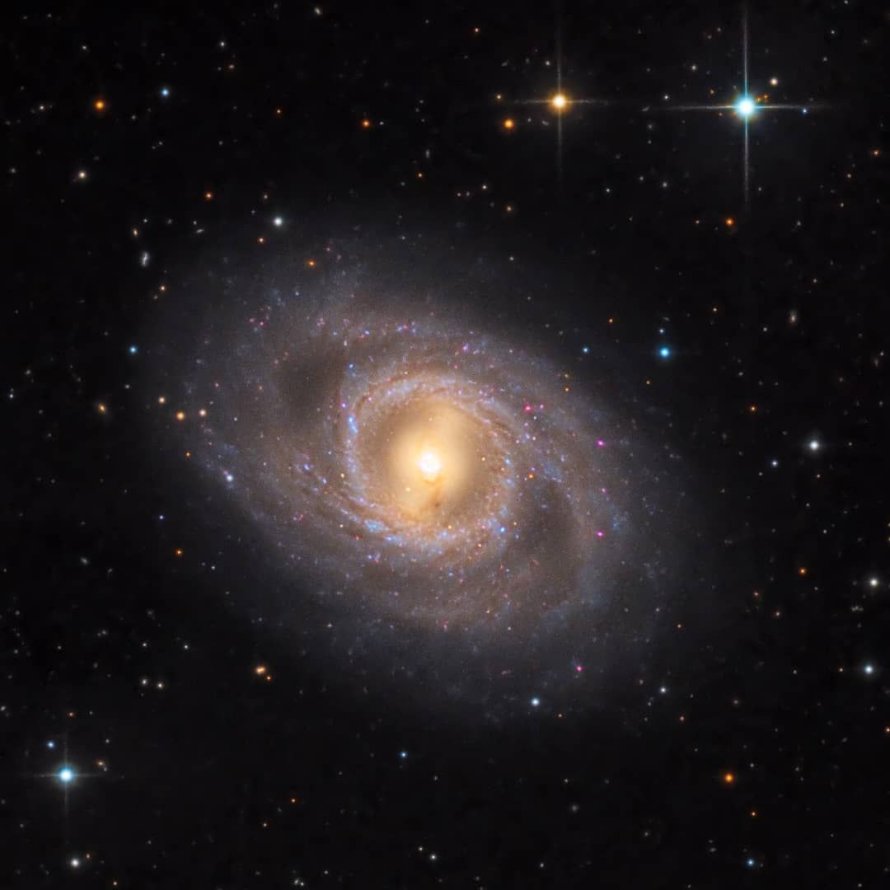M95 (NGC 3351)
Messier 95 (NGC 3351) is a barred spiral galaxy located in the constellation Leo in the Leo I Group of galaxies. M95 is 32600000 light years away from Earth.
M95 is best viewed during early spring, is magnitude 11.4, and can be viewed with small telescope. M95 is 3.1' x 2.9' in apparent size. For reference, the full moon is 30'.
Observing difficulty: Hard
- Name:
- Type:
- barred spiral galaxy
- Constellation:
- Leo
- NGC or IC:
- NGC 3351
- Magnitude:
- 11.4
- Viewing:
- small telescope
- Size:
- 3.1' x 2.9'
- Distance (light years):
- 32600000 LY
- RA:
- 10h 43.9m
- Dec:
- 11 42'
- Season:
- early spring
- Galaxy group:
- Leo I Group
- Messier Marathon #:
- 28
* The naked eye can see up to magnitude ~7-8 objects under ideal dark sky conditions.
A Deep Dive into the Barred Spiral Galaxy
Messier 95, also known as M95 or NGC 3351, is a barred spiral galaxy located approximately 33 million light-years away in the constellation Leo. First documented by Pierre M?chain in 1781 and later listed in Charles Messier's famous catalogue, M95 has become a fascinating object for astronomers and space enthusiasts alike because of its unusual and intriguing structure.
Characteristics of Messier 95
M95 is part of the Leo I galaxy group, which includes other well-known Messier objects like M96 and M105. With a diameter of about 75,000 light-years, it's roughly the same size as the Milky Way. What sets M95 apart is its distinct barred structure, a feature that is not visible in all spiral galaxies. The bar is a linear structure that cuts through the galaxy's core, extending out into its spiral arms.
The galaxy is also classified as a LINER galaxy (Low-Ionization Nuclear Emission-line Region), implying that it has uncommon spectral characteristics. These traits suggest that M95 harbors a moderate, yet active, nucleus likely powered by a supermassive black hole.
Magnitude and Distance
With an apparent magnitude of approximately 9.7, M95 is not visible to the naked eye but can be spotted with binoculars under favorable conditions or with a small telescope. Its absolute magnitude, an indicator of its intrinsic brightness, is estimated to be -21. Considering its distance from us, it's evident that M95 emits a considerable amount of light.
Finding and Observing Messier 95
Messier 95 is situated in the constellation Leo, a constellation that is quite easy to find in the night sky due to its distinctive sickle shape that represents the lion's head. M95 can be located about 0.5 degrees east-northeast of the star 53 Leonis (also known as d Leonis).
Despite its relatively low brightness, viewing M95 through a small telescope will reveal a hazy, circular object with a brighter center. Under excellent conditions and with larger telescopes, viewers may discern the barred structure of the galaxy. In fact, the bars in M95 are quite prominent, giving observers a wonderful opportunity to view such a feature.
M95's distinctive barred spiral structure, its proximity to other notable Messier objects, and its place in the easily recognizable constellation Leo, make it an interesting and satisfying target for both amateur astronomers and professional researchers. As we continue to observe and study objects like M95, we learn more about the cosmos and our place within it.



